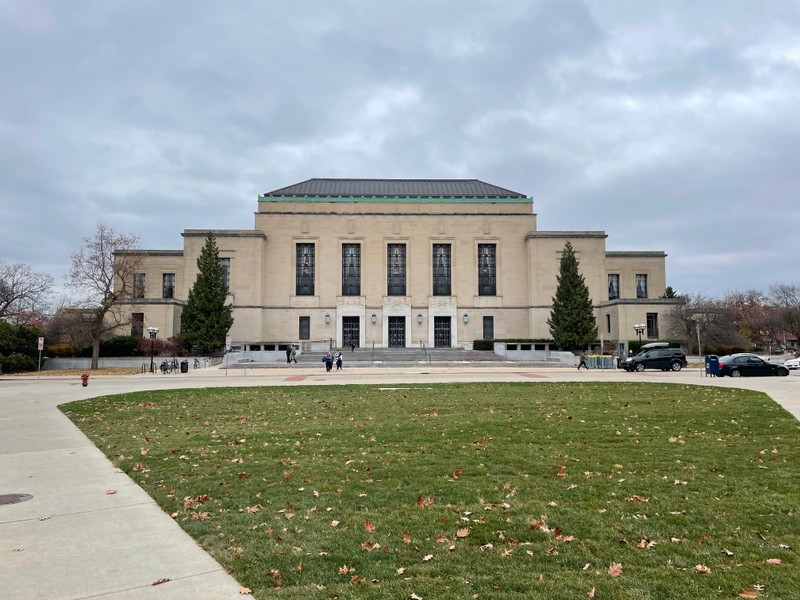Rackham Graduate School
Introduction
Text-to-speech Audio
This is the Rackham Graduate School building, housing the university’s graduate school headquarters. Most U-M students have been taught by a Graduate Student Instructor, or GSI. They are likely a member of GEO, the Graduate Employees’ Organization. GSIs form the front line of many courses here, doing a significant amount of the university’s undergraduate teaching.
Images
Rackham Graduate School Building

Backstory and Context
Text-to-speech Audio
In 1970, GEO first took shape when the then Teaching Fellows began to organize. When Political Science Teaching Fellows’ allocations were cut, they walked out of their discussion sections.
After years of continued efforts to organize (and opposition from the university administration), in April 1974, the university officially recognized GEO as a union—about five years after the first graduate student union was formed at the University of Wisconsin, Madison, in 1969. However, GEO and the university did not negotiate a contract until March 1975—and only after a month-long strike after the university refused to agree to binding arbitration after months of negotiations.
The Faculty Senate asked the GEO to postpone the strike for as long as possible so the academic year would not be disrupted, but within the first few days of the strike, more than 50 percent of the students had joined the GSIs in support. The strike was successful, leading to contract agreements regarding affirmative action, non-discrimination, and economic matters.
The fight for a liveable wage and health coverage began in 1993. The administration developed a health care plan called “GradCare,” and wanted all GSIs to switch to the plan. The plan increased out-of-pocket medical costs and moved GSIs to a package shared with faculty to one designed for students, despite being university employees. This is an important political distinction, as universities often base their resistance to graduate student labor unions based on the idea that graduate students are, first and foremost, students—and not workers. Rallies and informational pickets were held by GEO members to combat this new benefit plan. 87 percent of the GEO voted in favor of striking if the issue was not resolved. GEO did not have to strike, winning better health benefits and modest, 3 percent raises each year of their three year contract—not the liveable wage they were seeking. That would come in 1999, after a two-day walkout.
During 2020 in the midst of the pandemic, GEO went on strike for COVID-19 safety measures and working policies—as well as for significant reform to the university police. GEO’s “persistent negotiating and organizing” during this time was labeled as “screaming” by the former university President Mark Schlissel. While GEO made some gains, including guidelines for transparent COVID testing, greater support for international graduate students, and pandemic childcare options, the strike broke. The university took GEO to court and forced them back to work. Significant progress has been made, but the fight for workers rights on the University of Michigan campus is far from over.
Sources
Graduate Employees’ Organization. “GEO History.” Accessed October 20, 2022.
Lipinski, Ann Marie and Jim Tobin. “GEO Strike Begins Today.” Michigan Daily, February 11, 1975.
Eric Mackie
